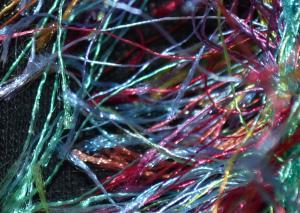
This post ran on my Huffington Post blog.
This week, we learned of 23,000 people in England and Wales classified as having “Mixed Religion.” This news comes from the United Kingdom’s Office on National Statistics, which just released new numbers on religious identity from the 2011 government census. Most of the news reports have focused on the finding that from 2001 to 2011, the percentage of Christians in England and Wales fell from 72 percent to 59 percent. Meanwhile, the number claiming no religion almost doubled to 25 percent, paralleling the rise of the “religious nones” in the U.S. The numbers of Muslims grew most quickly, to almost 5 percent, and the percentage of Hindus, Sikhs and Pagans all increased as well.
But as someone who was born into an interfaith family and raised my children with two religions, my eye was drawn to the new evidence of people claiming more than one religion in their lives. Who are these “Mixed Religion” folks? How many of them are born Christians or Jews who find Paganism or Buddhism equally compelling? How many of them are in long-term relationships and find themselves practicing their spouse or partner’s religion as well as their own? And how many of them are adults raised with more than one religion in interfaith families?
Here in the United States, the government’s Bureau of the Census collected information on identity from religious organizations from 1906 to 1936, but then stopped. As a matter of separation of church and state, I understand that we do not want to ask about religious identity on the Census. The question about religion was added to the U.K. Census in 2001. Answering the religion question on the Census is optional, but only about 7 percent declined to answer.
For statistics on religious identity in America, the best source may be the Pew Forum’s U.S. Religious Landscape Survey. In the 2009 report “Many Americans Mix Multiple Faiths,” Pew researchers found that, even beyond weddings and funerals, almost a quarter of Americans sometimes attend services of a faith other than “their own.” But the Pew researchers did not directly address the idea of “Mixed Religion” as a primary identity.
I chose to raise my children with an education in both Judaism and Christianity, in a community dedicated to supporting interfaith families. Many of the young adult graduates of these interfaith education programs, which exist in several cities now, would claim “interfaith” or “Mixed Religion” or “Jewish/Christian,” as a religious identity in a census, given the chance. And so would some of their parents, who may have spent their entire adulthoods celebrating two religions together, as a couple.
The discovery of a cohort of “Mixed Religion” adherents in the U.K. serves as a reminder that the demographic reality of religious double-belonging among adults can no longer be ignored. Most religious institutions continue to urge interfaith couples to pick one religion for children, to beware of confusion, to stop blurring boundaries. The reaction to dual-faith adherence is too often panic and disapproval, and the attempt to close borders. But for the individual, especially an individual like me who was born into a family with more than one religious heritage, crossing borders can be exhilarating and bring great joy. Our celebration of both faiths goes beyond Hanukkah and Christmas, beyond all the history of tragic conflict and religious violence, to a place where love prevails over dogma. In this spirit, and in the season of light in darkness, I send greetings across the Atlantic to those who celebrate Christmas and Yule, Hanukkah and Diwali, all of the above, or none of the above.

